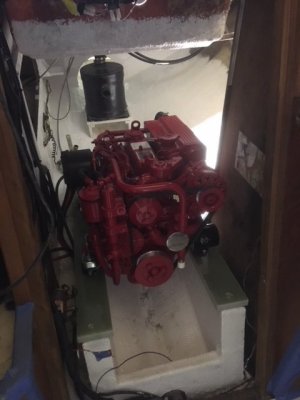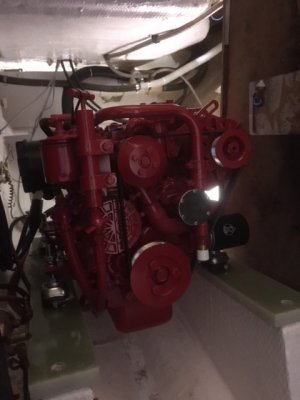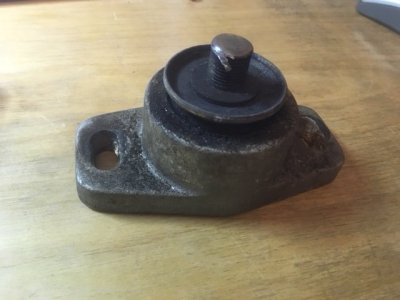struell
Stephen Ruell
I am in the last stages of negotiation with my boatyard for repowering our 1978 Morgan 382 which has a Yanmar 3QM30. It would be helpful to know if I had a home for the old but faithful Yanmar and if I could recoup a little of the cost. So does anyone have an interest in a running Yanmar?
I am the fifth owner so I cannot vouch for the accuracy, but the Hour meter says 1850 hrs. I don't know anything to dispute that, the overall light wear on the boat generally seems to agree with that. We've had it since 2014 and the engine itself seems to be in very good condition, starts on the first turn almost every time. It has been pretty well maintained from what I can tell. There is nothing particularly wrong, it is not rusty, does not use oil or smoke. There seems to a minor oil leak, which seeps a little oil from somewhere underneath but not enough to amount to much over a season, maybe something less than a quart. It has the 2.03 gear ratio. The seawater pump seems to have been changed from original and takes a non-Yanmar Jabsco type impeller. Hoses and such have been changed out recently.
Reasons for repowering -mostly that the engine is 40 years old and to reduce noise and vibration levels. It has always been part of my overall plan for upgrades to the boat. This year we have had trouble with the prop shaft coupling and the cooling water intake and need to replace and upgrade them. Though these can be done individually, this seems to be a good time for undertaking the overall repower.
It seems to me that this engine would be ideal for someone who is facing a rebuild of their own Yanmar and this could be a quick change out and be a lot less expensive. I would like to get $3000 plus shipping. The engine is still in the boat but would become available this winter, shipped to you by truck freight on a pallet. If interested I can try to email a video clip and/ or photos.
Steve
I am the fifth owner so I cannot vouch for the accuracy, but the Hour meter says 1850 hrs. I don't know anything to dispute that, the overall light wear on the boat generally seems to agree with that. We've had it since 2014 and the engine itself seems to be in very good condition, starts on the first turn almost every time. It has been pretty well maintained from what I can tell. There is nothing particularly wrong, it is not rusty, does not use oil or smoke. There seems to a minor oil leak, which seeps a little oil from somewhere underneath but not enough to amount to much over a season, maybe something less than a quart. It has the 2.03 gear ratio. The seawater pump seems to have been changed from original and takes a non-Yanmar Jabsco type impeller. Hoses and such have been changed out recently.
Reasons for repowering -mostly that the engine is 40 years old and to reduce noise and vibration levels. It has always been part of my overall plan for upgrades to the boat. This year we have had trouble with the prop shaft coupling and the cooling water intake and need to replace and upgrade them. Though these can be done individually, this seems to be a good time for undertaking the overall repower.
It seems to me that this engine would be ideal for someone who is facing a rebuild of their own Yanmar and this could be a quick change out and be a lot less expensive. I would like to get $3000 plus shipping. The engine is still in the boat but would become available this winter, shipped to you by truck freight on a pallet. If interested I can try to email a video clip and/ or photos.
Steve




